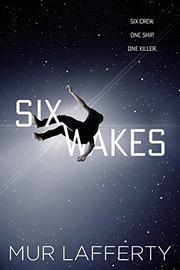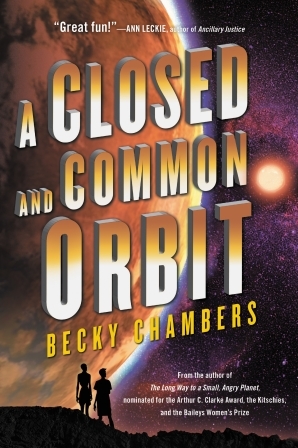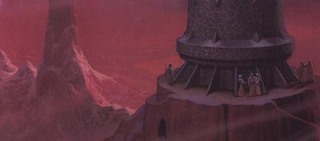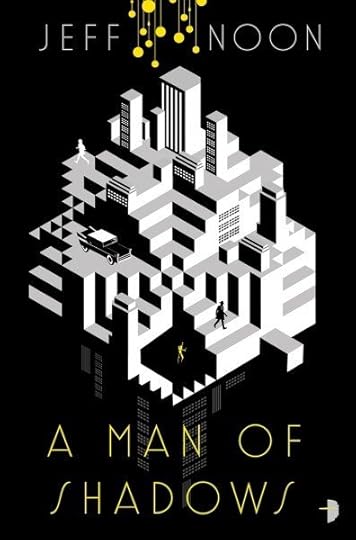Deborah J. Ross's Blog, page 93
November 15, 2017
Today's Moment of Serenity
Published on November 15, 2017 01:00
November 9, 2017
Squash Harvest. 2017
Every year we grow winter squashes of various sorts for food. I specify food rather than decoration because the output of a small plot of land in nutrients and calories from winter squashes is extremely good. They’re not only delicious (and beautiful) but are low in sodium and fat, and provide an array of vitamins, minerals, and fiber.Growing them is fairly easy, although the vines have a tendency to wander and take over.
[image error] Autumn 2017
Like summer squashes, winter squashes hybridize and so it’s best to either grow only one variety or start them from commercially obtained seed or seedlings every year. At least, that’s the theory. We often end up with “mystery squashes.” (“Wait! I don’t remember planting that – what is it?”) Our current theories are: (a) these are truly hybrids from last year’s crops; (b) they are hybrids from the seeds that entered our garden through compost scraps. The latter used to be more true when we got vegetable trimmings from the local health food store. My husband tells me we use “cold” composting (worms) rather than the “hot” method, so seeds will survive.
[image error] Boer White squash
[image error] Buttercup, one of our favorites
[image error]
Mystery squash, perhaps a hybrid of delicata and acorn. We got two and have devoured one. The shell is quite hard, as it often is with hybrids, but the flesh was delicious.The seeds will go to a friend who runs a seed-saver business.
[image error] Myystery squash, a cross with Cinderella pumpkin
This year, our garden produced about 100 lbs of winter squash. After harvest, we washed them, wiped them down with antiseptic cloths to reduce mold spores, and will “cure” them in the house for a couple of weeks before moving them out to the humidity-controlled library shed for longer-term storage.
We’ve already enjoyed one of the mysteries, and I’ve cut into the Boer White. In color and aroma, the flesh is like cantaloupe. The flavor is so delicate as to be barely discernible. More than that, between the thick shell, layer of green/white, and large seed cavity, there’s not all that much edible portion (unlike Cinderella, which is extremely generous). Likely we won’t grow this variety again, as we prefer more strongly flavored squashes.
[image error]
The larger of our Boer Whites. The ruler is 6" and the squash weighed about 7 lbs.
[image error]

Published on November 09, 2017 01:00
November 8, 2017
Today's Moment of Serenity
Published on November 08, 2017 01:00
November 3, 2017
Short Book Reviews: How Many Clones in a Murder?
 Six Wakes, by Mur Lafferty (Orbit, 2017). A crew on a generational space ship wakes – or rather, their clones do, a standard procedure that usually involves downloading stored memories for continuity. The one remaining crew, the captain, is near-death, there is blood everywhere, and none of the clones can remember what happened. In an added twist, all of them are criminals whose paths have crossed in the past and who have reason to hate each other.
Six Wakes, by Mur Lafferty (Orbit, 2017). A crew on a generational space ship wakes – or rather, their clones do, a standard procedure that usually involves downloading stored memories for continuity. The one remaining crew, the captain, is near-death, there is blood everywhere, and none of the clones can remember what happened. In an added twist, all of them are criminals whose paths have crossed in the past and who have reason to hate each other. Skillfully handled action and discovery of information lead to one plot twist after another. I especially liked how my initial assumptions about each character were turned inside out in a way that gave them depth and humanity, even the ship’s AI.
Exceptionally well-done science fiction mystery.

Published on November 03, 2017 01:00
November 2, 2017
A Grand Age of Astronomical Discovery
This is an amazing age of astronomical discovery. Not that long ago we could only speculate on the existence of planets around other stars, not to mention exploring those in our own system. We didn't know Jupiter had auroras or any of the many, many amazing discoveries of the last decades. Once we were limited to what our eyes and cameras could detect through the thickness of our terrestrial atmosphere. The Hubble Space Telescope launched our instruments beyond that blurring layer, and other telescopes, both on Earth and in orbit, expanded our view to include other parts of the EM spectrum. We have X-ray and infrared telescopes, and color enhancement by computers. Space probes like the Pioneers, Voyager, Spirit and Opportunity, Cassini-Huygens, Juno, and New Horizons have vastly expanded our understanding of the solar system. Who knows what wonders lie yet to be explored?
Here are a few tidbits in recent news:

In the past, auroras have been spotted around Jupiter’s poles by NASA’s Chandra X-ray Observatory and by the Hubble Space Telescope. Investigating this phenomena and the mechanisms behind it has also been one of the goals of the Juno mission, which is currently in an ideal position to study Jupiter’s poles. With every orbit the probe makes, it passes from one of Jupiter’s poles to the other – a maneuver known as a perijove. Full article here.

Using the NASA/ESA Hubble Space Telescope, astronomers have discovered that the brightest galaxies within galaxy clusters “wobble” relative to the cluster’s centre of mass. This unexpected result is inconsistent with predictions made by the current standard model of dark matter. With further analysis it may provide insights into the nature of dark matter, perhaps even indicating that new physics is at work. Full article here.

Using an innovative new telescope array, an international team of researchers has discovered a distant gas giant roughly the size of Jupiter around a star half the size of ours. It’s considered the largest planet in proportion to its companion star.
Bayliss and Wheatley spotted the hot Jupiter using the Next-Generation Transit Survey (NGTS) instrument, a wide-field observing facility composed of several telescopes at the European Southern Observatory’s Paranal Observatory in Northern Chile. This state-of-the-art facility is operated by the Universities of Warwick, Leicester, Cambridge, Queen’s University Belfast, Observatoire de Genève, DLR Berlin, and Universidad de Chile. Full article here:

Here are a few tidbits in recent news:

In the past, auroras have been spotted around Jupiter’s poles by NASA’s Chandra X-ray Observatory and by the Hubble Space Telescope. Investigating this phenomena and the mechanisms behind it has also been one of the goals of the Juno mission, which is currently in an ideal position to study Jupiter’s poles. With every orbit the probe makes, it passes from one of Jupiter’s poles to the other – a maneuver known as a perijove. Full article here.

Using the NASA/ESA Hubble Space Telescope, astronomers have discovered that the brightest galaxies within galaxy clusters “wobble” relative to the cluster’s centre of mass. This unexpected result is inconsistent with predictions made by the current standard model of dark matter. With further analysis it may provide insights into the nature of dark matter, perhaps even indicating that new physics is at work. Full article here.

Using an innovative new telescope array, an international team of researchers has discovered a distant gas giant roughly the size of Jupiter around a star half the size of ours. It’s considered the largest planet in proportion to its companion star.
Bayliss and Wheatley spotted the hot Jupiter using the Next-Generation Transit Survey (NGTS) instrument, a wide-field observing facility composed of several telescopes at the European Southern Observatory’s Paranal Observatory in Northern Chile. This state-of-the-art facility is operated by the Universities of Warwick, Leicester, Cambridge, Queen’s University Belfast, Observatoire de Genève, DLR Berlin, and Universidad de Chile. Full article here:

Published on November 02, 2017 01:00
October 27, 2017
Short Book Reviews: AI and Woman Explore Common Humanity
 A Closed and Common Orbit, by Becky Chambers (Harper Voyager, 2017). Despite being a sequel to A Long Way to a Small, Angry Planet, this story stands beautifully on its own. Through alternating flashback and present points of view, two characters embark upon very different journeys with the same question: what does it mean to be a person?
A Closed and Common Orbit, by Becky Chambers (Harper Voyager, 2017). Despite being a sequel to A Long Way to a Small, Angry Planet, this story stands beautifully on its own. Through alternating flashback and present points of view, two characters embark upon very different journeys with the same question: what does it mean to be a person? Sidra was once Lovelace, an AI controlling a space ship. Now she finds herself in an artificial body that in most ways mimics that of a human woman. She’s cut off from the multiple audio and visual inputs that have defined her world, besieged by physical sensations and social expectations, and at risk of exposure.
Her guide and companion, Pepper, has a troubled and traumatic past as a cloned child-slave. Chance and luck freed her, then ten years old, from a factory where she sorted and repaired trashed equipment, then led her to a buried spaceship, whose AI provided her with the only loving parenting she had known. Pepper’s past struggles beautifully mirror and inform Sidra’s present quest.
Sympathetic characters, fascinating alien cultures, nicely paced action, and understated depth mark this as a book to savor and re-read.

Published on October 27, 2017 01:00
October 25, 2017
A Flower to Brighten Your Day
Published on October 25, 2017 12:36
October 23, 2017
Crossroads of Darkover Story Lineup

Here's the lineup for the next Darkover anthology, which I have edited. Release date is May 2, 2018:
The Short, Inglorious War, by Rebecca Fox
A Study in Sixes, by Gabrielle Harbowy
A Plague of Aunts, by Jane M. H. Bigelow
Quevrailleth’s Sister, by Leslie Fish
The Cobbler to His Last, Rosemary Edghill and India Edghill
Night of Masks, by Diana L. Paxson
The Song of Star Girl, by Marella Sands
The Raptor Matrix, by Evey Brett
Trust, by Jenna Rhodes
A Game of Kings, by Shariann Lewitt
Wind-Born, by Pat MacEwen
Snowquake, by Robin Wayne Bailey
Tricky Things, by Robin Rowland and Deborah J. Ross
Crème de la Crème, by Deborah Millitello

Published on October 23, 2017 01:00
October 20, 2017
Short Book Reviews: Murder Mystery in a City Without Night
 A Man of Shadows by Jeff Noon, Angry Robot, 2017.
A Man of Shadows by Jeff Noon, Angry Robot, 2017. From the first page, I loved this surreal, hallucinatory world. The story centers on a city where eternal day is created by artificial lightning: every space is saturated with brilliance, and the entire society depends upon those with the never-ending task of replacing light bulbs as they burn out. Without natural night and day, the usual measurement of time becomes meaningless, giving the city’s inhabitants the choice of living by many calendars; some are the products of commerce (“Business Standard Time”) but others are whimsical and capricious. Sometimes it’s all a person can do to keep with the necessary changes to their wristwatch. Not surprisingly, many suffer disorders of time due to constant disruption of the body’s internal rhythms. The luscious prose and bizarre imagery perfectly reflect the disorientation of the characters.
Outside the city lies a treacherous region of Dusk, transversable only by special trains, and beyond it, Nocturna. (A few asides refer to regions outside the city’s influence, where crows grow and cows graze in unaltered days and nights, so we know the entire planet has not succumbed to artificial divisions of day and night.) Mysterious mists swirl through Dusk, and those who venture into them emerge changed or not at all. Not surprisingly, Dayzone is far from idyllic, beset by not only light-sickness but a serial killer and kidnappings. The protagonist, a private detective named Nyquist, is drawn into this dark side of light when he takes on the case of the missing daughter of a wealthy, powerful man. His search reveals not only dangerous connections but his own unresolved past.
Innovative world-building enhanced by a surreal and highly literate prose style offer both a challenge and a reward to the reader. My only complaint was that Nyquist is so perennially sleep-deprived, and the text is so reminiscent of the way thought fractures under disruptions of the normal circadian rhythm, that I kept wanting to curl up and nap. Recommended , especially for those who enjoy a hefty dose of weird in their fiction.

Published on October 20, 2017 01:00
October 18, 2017
[personal] Fire Update

Hello everyone -- sorry to be absent yesterday. We lost DSL/phone/internet due to the Bear Fire. Back online now. The fire's about 6 miles from us, but not moving in this direction, so no evacuation order for this neighborhood. It's incredibly smokey, though, in addition to what blew south from the Santa Rosa fires. At last count 6 firefighters have been injured and a bunch of homes destroyed. You can see from the image how rugged the terrain is. They're guessing the total acreage will be around 500. On the plus side, rain is forecast for tomorrow.

Published on October 18, 2017 12:25









